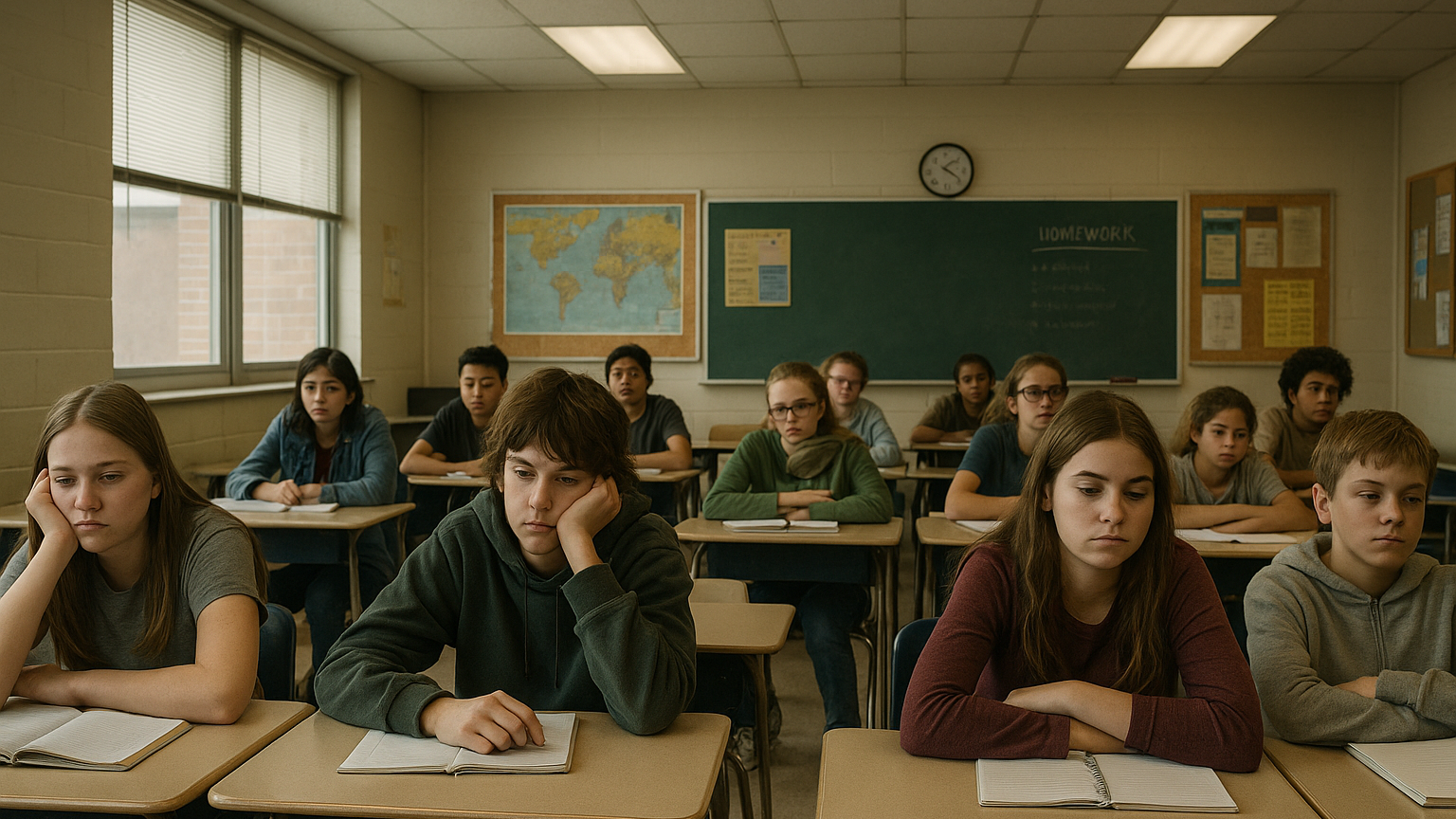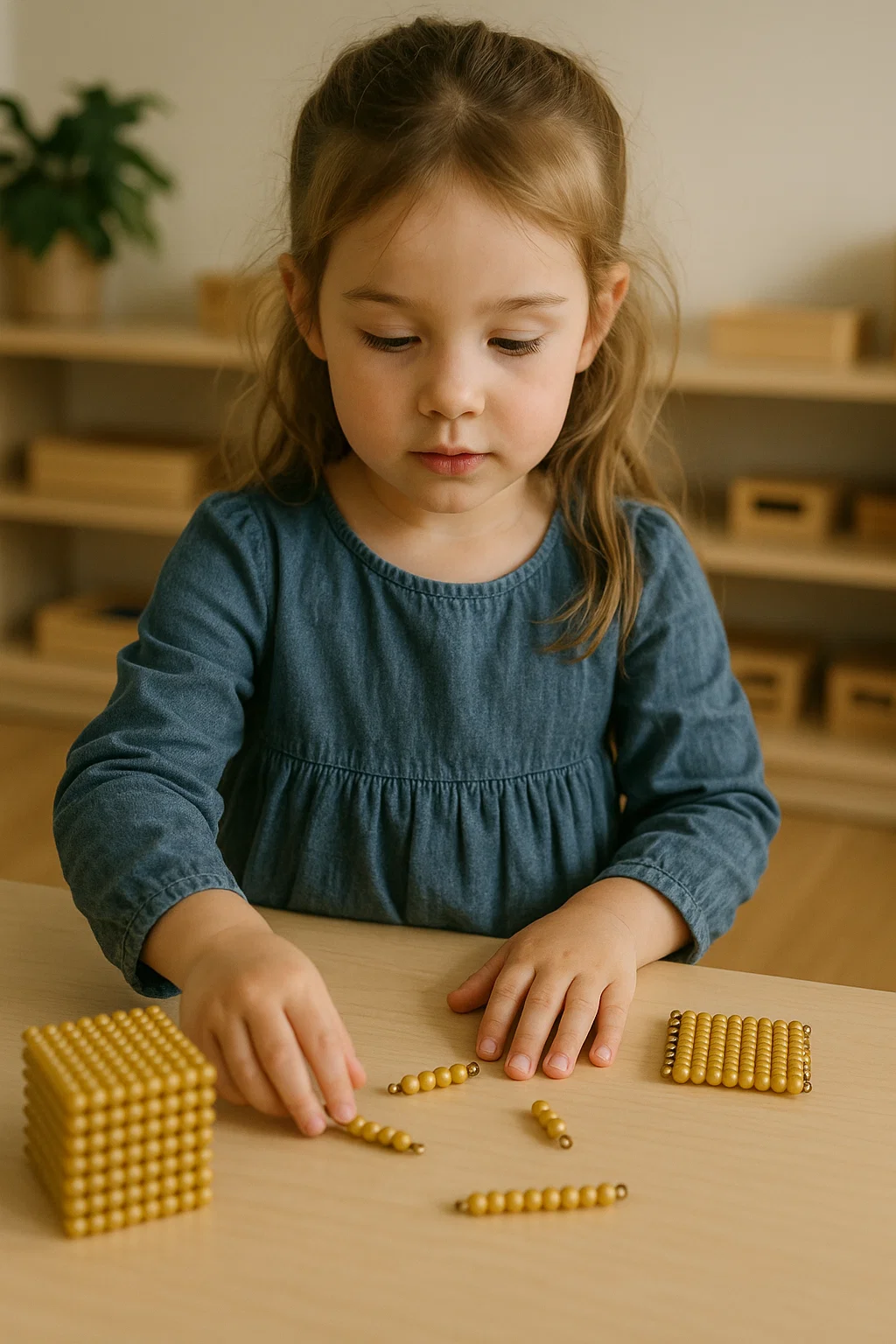Sustaining Engagement from Preschool to Middle School
A Crisis of Disengagement
Given our role as educators of the next generation, a recent article in The Atlantic, The Teen-Disengagement Crisis, struck a nerve. It should also concern parents.
The article highlighted a troubling trend: by middle school, many students’ desire to learn “falls off a cliff.” Only about a quarter of tenth graders say they still “love school” —down from about three-quarters in third grade.
Parents of middle school students might recognize this so-called “Passenger Mode”. They might notice their children appear bored or disinterested and focused only on the minimum needed to pass or seeking shortcuts to complete homework or assignments. The authors warn that this disengagement can affect academic growth, making it harder for students to develop the skills they’ll need for life beyond school.
Montessori Methods Help To Prevent Passenger Mode
The good news? This slide into disengagement isn’t inevitable. Compared with other educational approaches, Montessori methods provide children with meaningful choice, uninterrupted focus time, and developmentally aligned challenges. This methodology creates conditions that keep curiosity alive and encourage students to actively invest in their learning. In fact, research shows that Montessori education—with its scientifically designed environments, multi-age classrooms, and low student-teacher ratios—creates deeper, more sustainable engagement across all developmental stages, from early childhood through adolescence.
To compare these benefits, consider charter schools, which promote methods similar to those we use. For example, charter schools frequently emphasize project-based learning (PBL) and group work, which have always been part of the Montessori methodology. However, charter schools often struggle to implement PBL and group work due to larger class sizes and standardized mandates. For example, a 2020 analysis found that PBL’s success in charter schools depends heavily on teacher autonomy and small-group support—features already built into Montessori’s core methods. (Lucas Education Research. (2020). Enabling conditions for scaling project-based learning. George Lucas Educational Foundation)
With charter schools, however, program design and outcomes are less consistent. A 2022 study found that student achievement largely depends on the type of charter school, who runs them, how they’re authorized, how they’re organized, and the instructional learning conditions they provide. (Dallavis, J. W., & Berends, M. 2022. Charter schools after three decades: Reviewing the research on school organizational and instructional conditions. Education Policy Analysis Archives, 31(1). https://doi.org/10.14507/epaa.31.7634)
The table below summarizes the structural differences distinguishing Montessori and charter schools.
| Category | Charter Schools | Montessori Schools |
|---|---|---|
| Class Ratios | 25–30 students per teacher | 10–15 students per trained teacher |
| Learning Environment | Teacher-directed projects with fixed timelines | Child-led exploration with uninterrupted 3-hour work cycles |
| Peer Collaboration | Age-segregated groups | Mixed-age mentoring in 3-year classroom spans |
| Teacher Training | Variable focus on student autonomy | 500+ hours of Montessori-specific pedagogy |
How Our Montessori Program Maintains Engagement
At the New School, our program prevents disengagement because it is designed to align with the child’s developmental needs at every stage—starting in early childhood and continuing through adolescence. In contrast to charter schools, our small class sizes promote engagement by providing personalized support which leads to a calm, developmentally responsive learning environment and then authentic independence.
A Charter School Student vs. a Montessori Learner
Consider Jason. He’s a 6-year-old in a charter school classroom with 28 children. He rotates between worksheets, teacher-led lessons, and brief center activities. The teacher pre-assigns projects are pre-assigned with fixed timelines and little room for exploration. Jason finishes early but must wait for the rest of the class to move on. Over time, he grows bored—and begins to tune out.
Now compare Jason with Maya. She’s in a mixed-age Children’s House classroom of 15. She chooses Golden Beads, a hands-on math material that challenges her just enough. While her younger classmate explores letters nearby, Maya works independently with the materials. Her Montessori teacher observes quietly. When Maya hits a snag, the teacher guides her with a thoughtful prompt. Maya is not just learning math—she’s building focus and confidence. She feels a sense of joy in mastering something on her own terms.
Nurturing Lifelong Learners, Not Just Good Students
As The Atlantic article reminds us, grades don’t tell the whole story. While we aim for academic success, our goal is to foster lifelong learners who are curious and motivated. Their skills promote the adaptability needed to meet the future with confidence.
As it should, our school does more than prepare students for tests. It helps them discover who they are—and who they want to become.
See the Difference: You’re Invited!
If you’re concerned about your child’s engagement—or simply want to see what a different kind of school looks like, meet our students to see how we nurture curiosity and independence to maintain the child’s natural joy in learning. We invite you to schedule a personal tour.



